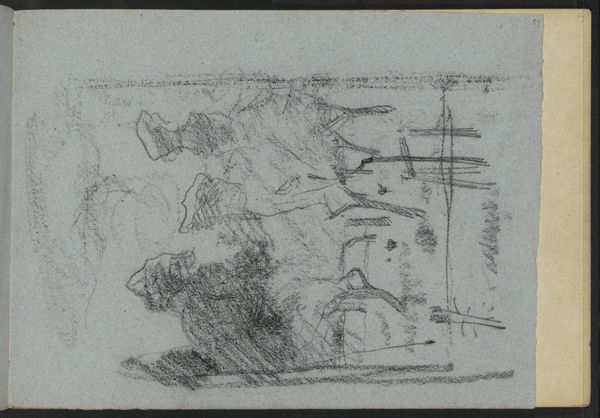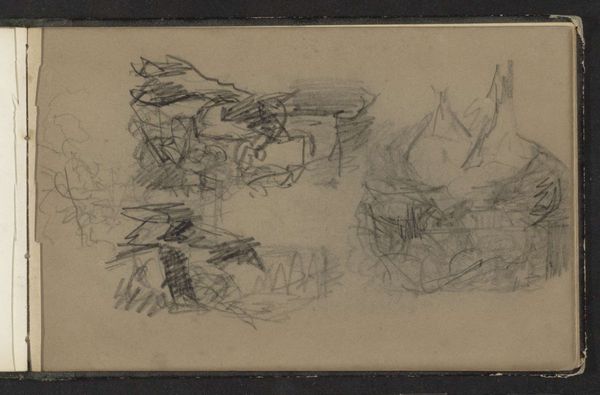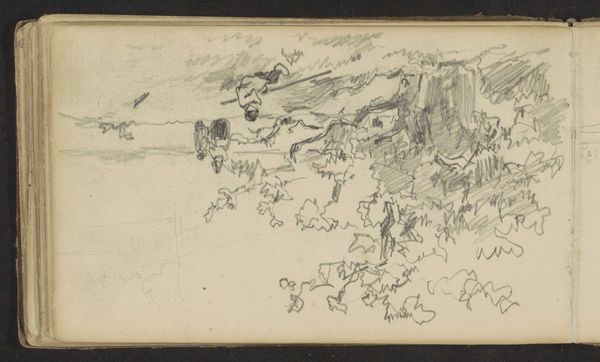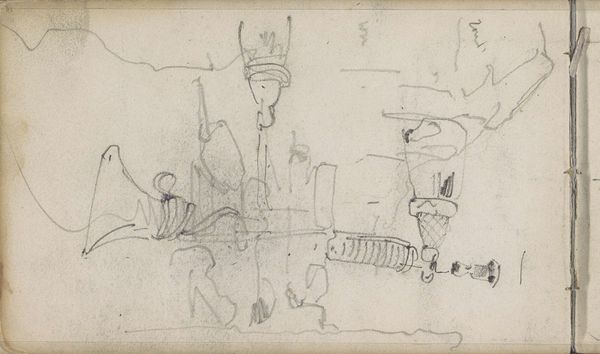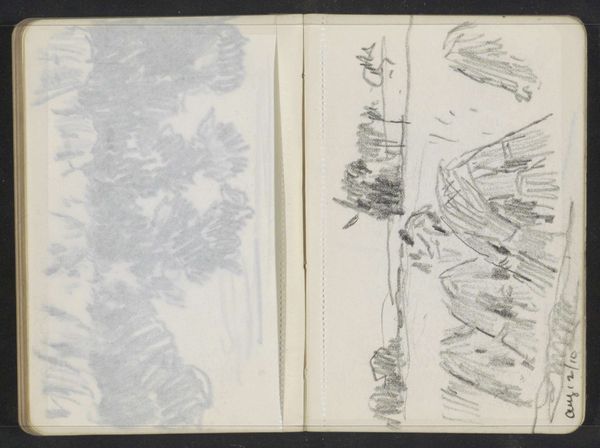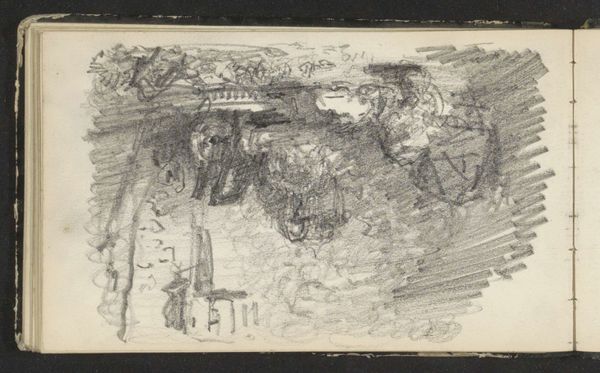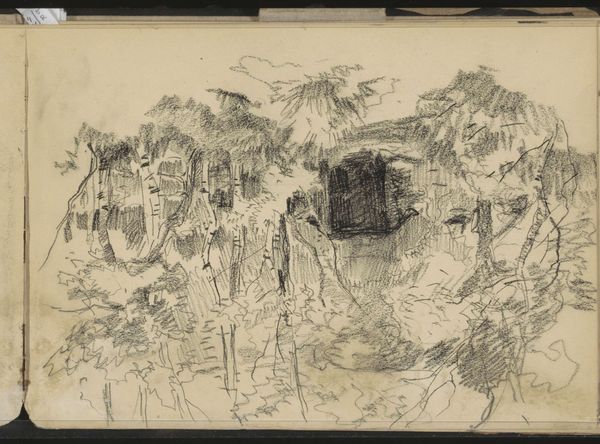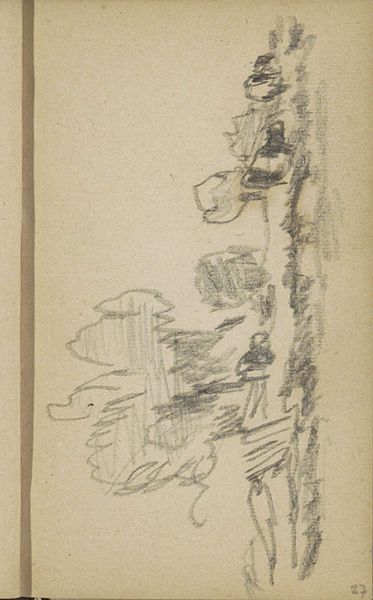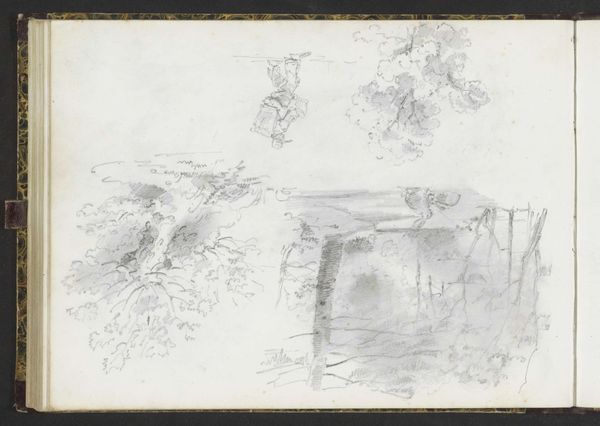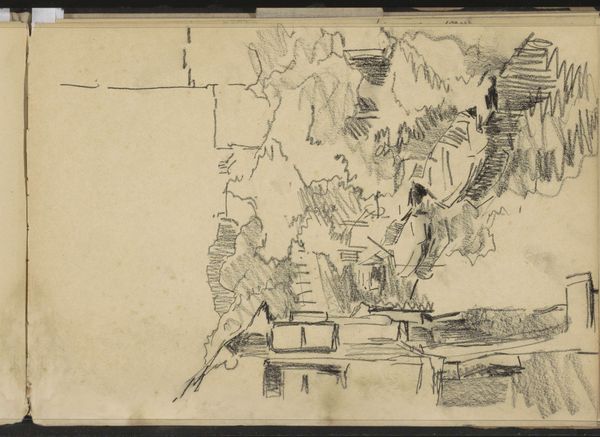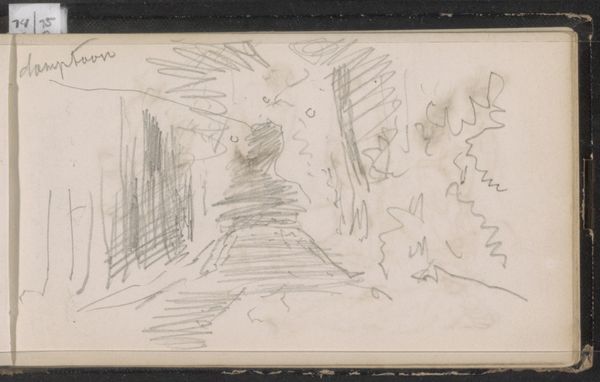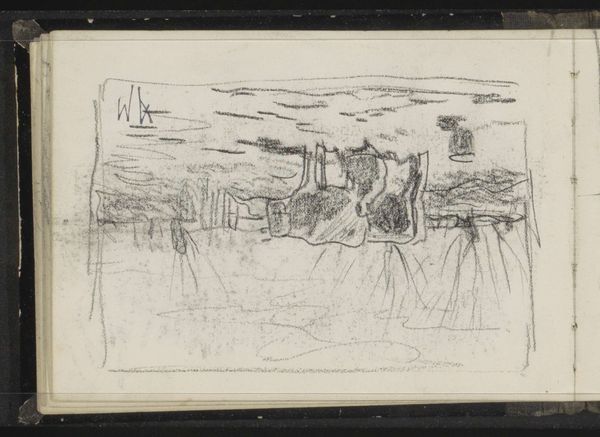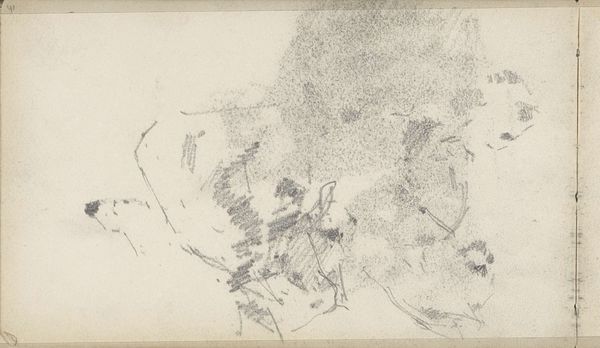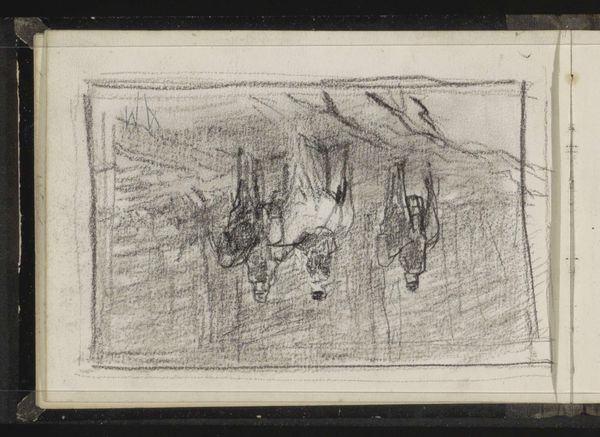
Copyright: Rijks Museum: Open Domain
Editor: This intriguing sketch, "Bomen en struiken, vermoedelijk naast een huis" or "Trees and shrubs, probably next to a house," was rendered by Maria Vos sometime between 1856 and 1870. It's currently housed at the Rijksmuseum, made with pencil, probably in a sketchbook. I find the marks themselves captivating; what stands out to you about it? Curator: Considering Vos's materials - the pencil, the sketchbook itself – tells us something significant. It was a readily available and portable technology that enabled the easy creation and mass distribution of imagery. We might explore how the materials democratize landscape art, shifting it away from formally commissioned oil paintings and into a more intimate realm of personal documentation and skill. Editor: Democratization of landscape art, interesting! How does that translate in the Romanticism era? Curator: During Romanticism, mass-produced printed images exploded in popularity due to improvements in lithography, steel engraving, and wood engraving, providing increasingly affordable images. Compare this drawing to academic landscapes of the time. Vos’s piece here showcases an exploration of form and the direct interaction between the artist, her tools, and her immediate environment, rather than adhering to strict artistic standards for exhibition. It is literally made in nature rather than manufactured to satisfy the elite art market. Editor: So, the sketch as a kind of direct record, made possible by relatively simple, cheap tools. Curator: Exactly. What does it mean to art when sketches like this become more visible? How does access to such imagery shape how landscape and artistic skills become perceived? What do the quick strokes imply? What about its mass availability compared to the academic route? Editor: It redefines skill, perhaps, focusing on accessibility over meticulous detail, emphasizing the artist’s gesture... It certainly prompts me to think about value and production in different ways. Curator: Indeed. This exercise brings the artwork away from “beauty” and “aesthetics” and makes you consider the role of industrialism and consumerism instead.
Comments
No comments
Be the first to comment and join the conversation on the ultimate creative platform.
